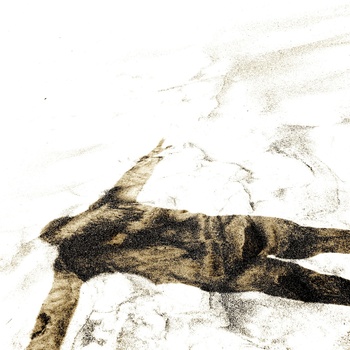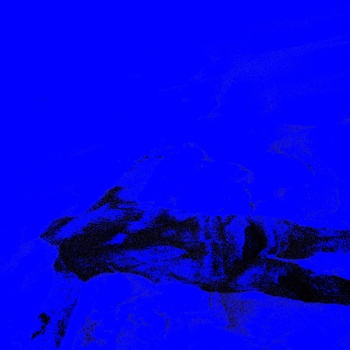 Is there such a term for a Catch-22 with a Catch-22? One of the massive upsides to recording music in the current age is the ability to affordably multi-track in real-time. Studio time and money isn't burned in a studio recording demos and soon-to-be outtakes. Waste is decreased, or is it? Are those first versions unimportant artifacts? Is the final product any better because it was practiced less? As a fan of the Shadow Weaver albums these two collections are an exciting special treat, but I doubt any of these songs would have made a mix tape of mine for an LPD newbie 20 years ago.
Is there such a term for a Catch-22 with a Catch-22? One of the massive upsides to recording music in the current age is the ability to affordably multi-track in real-time. Studio time and money isn't burned in a studio recording demos and soon-to-be outtakes. Waste is decreased, or is it? Are those first versions unimportant artifacts? Is the final product any better because it was practiced less? As a fan of the Shadow Weaver albums these two collections are an exciting special treat, but I doubt any of these songs would have made a mix tape of mine for an LPD newbie 20 years ago.
LPD Bandcamp (click for samples)
The Shadow Weaver albums represented a significant evolution in the band's history. After the untimely passing of Bob Pistoor, the group underwent an expansion, adding guitarist Martijn de Kleer and multi-instrumentalist Ryan Moore to the trio of Edward, Phil, and Neils. Additionally Patrick came back for some stringed appearances and they hooked up with Steven Stapleton, whose talents both as an engineer and visual artist were both utilized. The resulting releases were ripe with juxtaposition. Each was longer in duration than any prior single-LP, however with fewer songs. There was more of a "pop" feel to the songs themselves, however there was strong element of exploration and studio wizardry that permeated throughout. The songs were clearly formulated from longer sessions that were more spacey and experimental in nature than anything the LPDs had done.
Come Out from the Shadows (the first collection) features five pieces of music. The first version of "Stitching Time," originally on Shadow Weaver, has surfaced before on a compilation from Beta-Lactam Ring in the exact same version. It serves as a great introduction to this particular ensemble, provided space for each member to take turns, much like an old jazz ensemble.
The group are in fine form on both grooves "On the Boards" and "Window on the World," each from Malachai. The Dots demonstrate a more "rounded" feel the group had, in comparison to the band's prior history. Ryan's bass provides a wonderful pulse and I enjoy Martjin's elemental guitar work, as it's never overbearing.
The untitled improvisations have less structure, but there are certain bits and pieces which seem familiar, as they evolved into other songs. The first one could be heavily influenced by Asmus Tietchens with its whimsical speedy digital melodies while the beautiful piano, flute, and analog synth interplay of the second one might be from the same sessions that produced "Prague Spring" or "Paris 4AM."
 Come Out of the Shadows 2 consists of six untitled session pieces totaling 54 minutes. I can hear the genesis of "We Bring the Day" immediately with the opening one but it, along with the other pieces are noticeably less structured than those songs featured in the other collection. It's a great listen as a whole, however, especially to hear Patrick on viola and violin.
Come Out of the Shadows 2 consists of six untitled session pieces totaling 54 minutes. I can hear the genesis of "We Bring the Day" immediately with the opening one but it, along with the other pieces are noticeably less structured than those songs featured in the other collection. It's a great listen as a whole, however, especially to hear Patrick on viola and violin.
There's a very enjoyable voyeuristic aspect to listening to this set. I easily feel either like a fly-on-the-wall or that I'm actually sitting down on a couch while the group play in front of me. The session pieces have distinct identities but if there were no denotations of "Shadow Session 1," "Shadow Session 2," etc, I wouldn't be able to discern much of a difference while listening start to finish.
Without words or themes is fine by me. I do listen and my mind wanders on its own.For years I have claimed that the age of social networking has made us more antisocial. The advantages of the digital age mean that we can send tracks across cyberspace and save on air and accommodations, but this comes at the cost of social moments such as this. Come Out of the Shadows 2 feels like a social moment frozen in time where a small group of people (one Canadian, some Brits and some Dutch men) met and engaged in a conversation far more entertaining to me than to listen to a panel discussion or watch a television show.
Don't misinterpret my wandering mind, though. This recording isn't a meandering snore or a clumsy mess. Each musician takes turns and collaboratively allow others to play, maintaining a collaborative and democratic feel throughout. Moments build, specially on session 3, where malleted drums and guitar take turns along with synth and violin interplay. Even though the LPDs have run in circles with "anti-musicians" for years, make no mistakes, they have always been authentic musicians and composers at the core. Improvisational work, to me, is best when it is accomplished by musicians who possess the ability and virtuosity to perform within structures and framework.
The digital age is not a complete wash, and here's the catch 22 inside the catch 22. While appeal of outtakes and demo sessions is considerably less broad than main albums, digital distribution can now afford musicians the ability to get the music to those who want. This can be accomplished swiftly and inexpensively without investing loads of money on the manufacturing of product, which may collect dust in storage for the most part. So while the digital age might not produce more sessions captured on these two collections, it has afforded us, the fans, the ability to listen and enjoy these golden moments.
And, to top it off, you can pay whatever you want for both of these sessions on Bandcamp! What a treat!
 
Read More

